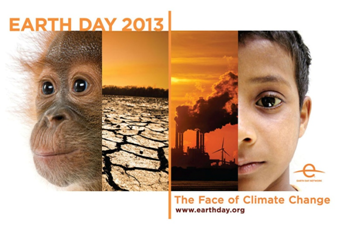 The seventies was a decade defined by its free-loving, environmentally aware, “hippie” culture, so it comes as no surprise that Earth Day, a day dedicated to environmental awareness, was created in the spring of 1970. Founder Gaylord Nelson, U.S. Senator (1963 to 1981), was so appalled by the ravages of the 1969 oil spill in Santa Barbara, California, he decided that it was time for a change. Along with support from Pete McCloskey, a conservation-minded Republican Congressman and Denis Hayes, who became the national coordinator, he announced to the media the need for a “national teach-in on the environment.”
The seventies was a decade defined by its free-loving, environmentally aware, “hippie” culture, so it comes as no surprise that Earth Day, a day dedicated to environmental awareness, was created in the spring of 1970. Founder Gaylord Nelson, U.S. Senator (1963 to 1981), was so appalled by the ravages of the 1969 oil spill in Santa Barbara, California, he decided that it was time for a change. Along with support from Pete McCloskey, a conservation-minded Republican Congressman and Denis Hayes, who became the national coordinator, he announced to the media the need for a “national teach-in on the environment.”
Initially motivated by the student anti-war movement, Nelson believed that if he could inspire the same energy and public consciousness that was seen at many protests towards an environmental cause, then it could force environmental awareness onto the political agenda.
As a result the first ever Earth day was born. On April 22nd 1970, 20 million Americans demonstrated on the streets, in parks and auditoriums demanding a sustainable environment and the aiming to raise public awareness about how to look after our fragile planet.
Today, 46 years later, we celebrate Earth Day 2013 with the theme “The face of climate change.” With over 1 billion people taking part worldwide, they are granted the opportunity to voice their concerns and to take action. This is an issue that effects everyone across the globe, whether it is the effects of climate change on human health, or on the floods and droughts causing huge agricultural problems. This is our world for us to save.
For more information on Earth Day 2013, and how you can take part, please visit their website.
For research relevant to Earth Day and its objectives please visit BioMed Central’s open access journals, Agriculture and Food Security and Environmental Health. For more please visit the BioMed Central website.
Latest posts by Nicola Gorsuch (see all)
- Home gardens for food security - 17th June 2013
- The extent of arsenic pollution in contaminated groundwater - 31st May 2013
- Mosquito survey identifies reservoir of disease - 10th May 2013
Comments